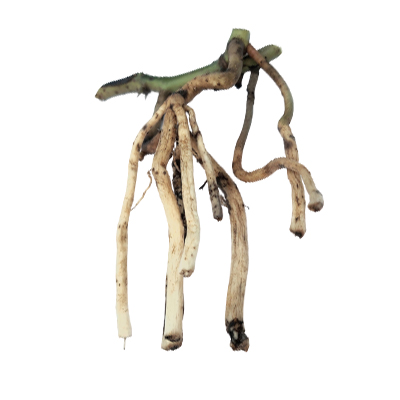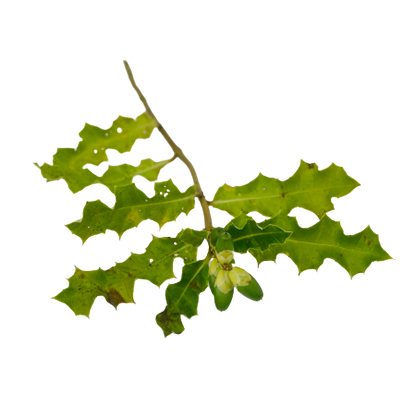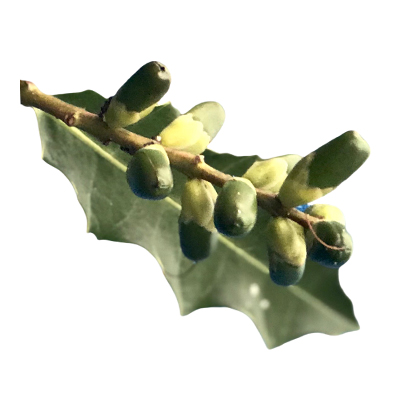Mangrove Holly
Acanthus ebracteatus Vahl
Acanthaceae
Location in our garden
Orchard
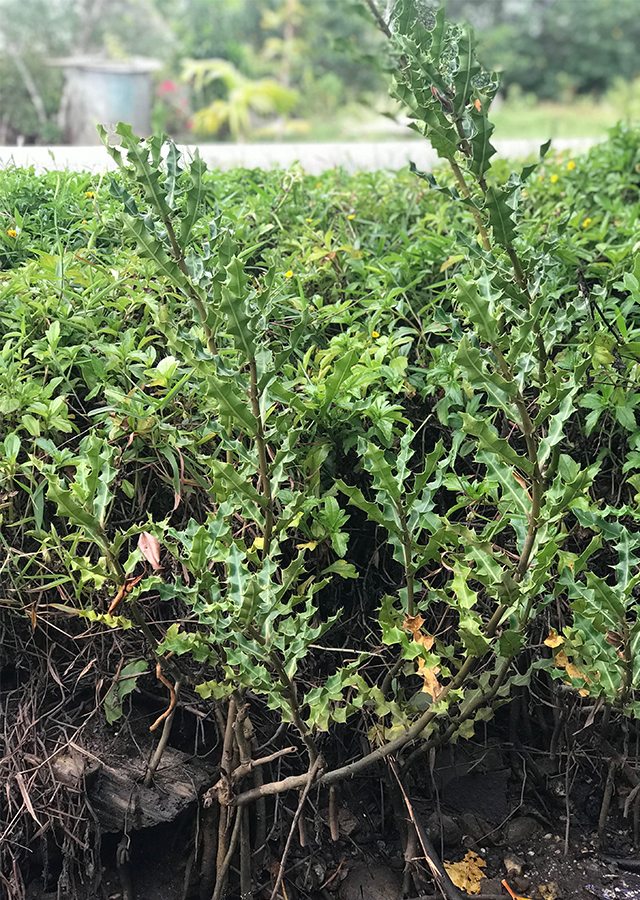
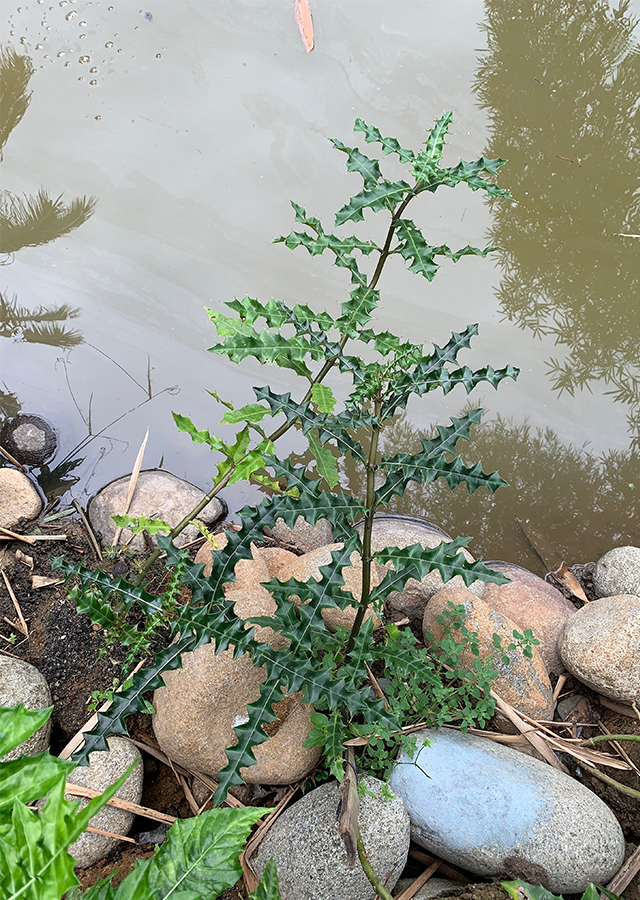

Synonym
Acanthus ilicifolius Lour.
Dilivaria ebracteata (Vahl) Pers.
Habitus
Shrubs. A succulent, slightly branched, erect, growing about 1.5 m tall.
Part Used
Leaves
Seeds
Roots
Stem
Growing Requirements
Full Sunshine
Need Shade
Habitat
Aquatic
Overview
Mangrove holly is native to Australia, New Zealand, and South-East Asia. The species grow widespread in South-East Asia, Indochina, Indonesia, the Philippines, and northern Australia. The typical habitat for this species is mangroves. As medicine and material for making soap, the plant is harvested from the wild for local use.
Vernacular Names
Lao shu le (Chinese), Karimkurunji (Indian), Cha kreng (Thai), Jeruju (Malay), Akansasu irikiforiusu (Japanese), Diluariu (Philippines).
Agroecology
A tropical plant, found in areas with no dry season or limited dry season, along the shoreline. It grows best in areas where annual daytime temperatures are within the 18-26 °C range, but can withstand 15-32 °C. Average annual rainfall in the range of 1,500-2,500 mm is preferred. Thrives in heavier soils with moderate to high fertility, with a pH range of 6.8-7.2.
Morphology
- Roots - shallow taproot, but occasionallystilt roots are conspicuous.
- Stems - green to dark brown to black incolor and is armed with numerous spines.
- Fruits - the square capsule, which explodeswhen the seeds are ripe and projected,measures up to 2 m from the plant.
- Leaves - It is oblong, measuring 12-20 cm x3-5 cm. The blade of the leaf is dark green,rigid, and strongly lobed. Each has a sharpspine at the apex of the lobes.
- Flowers - with many flowers in terminal oraxillary spikes of about 10 cm in length. TheCorolla is white, although there are pale blueforms. There are pink stamens.
- Spikes - most flowery, ovate bracts are 6-8 mmlong, up to 10 cm long. The sepal lobes have anovate shape. The petal lobe, measuring 2.5 cmx 2 cm, is elliptically oblong, white andoccasionally bluish.
- Seeds - off white and flat.
Cultivation
It is possible to spread this species by seeds (generative propagation) and stem cuttings (vegetative propagation).
Chemical Constituents
Alkaloids, flavonoids, steroids, lignan, phenol, β-sitosterol, benzoxazinoid glucosides, arabinose, galacturonic acid, rhamnose and terpenoids.
Traditional Medicinal Uses
- Antibacterial, antifungal, antioxidant, hepatoprotective, gastroprotective, anticancrogenic, chemopreventive, anthelmintic, anti-inflammatory, anti-osteoporotic, antinociceptive properties have been suggested in someresearch
- The leaves are used to treat inflammatory conditions including rheumatism in South-East Asia.
- The seeds are highly regarded for chronic boils as a cure. Pounded and mixed with water, for each seed taken, it would make the individual free of boils for a year. In addition, the seeds are used to treat intestinal worms.
- The Malays also promote the use of roots as an immediate cure for snakebites and for treating the symptoms of other animal toxins. In Kalimantan, however, fruit pulp is used to clothe snakebite wounds.
- Among the inhabitants of mangroves, it is widely recognised that leaf juices are good for preventing hair loss.
- The herpes zoster is handled using the roots.
- Combined with Averrhoa flower and black sugar cane, cinnamon and rocksugar, a cough mixture is made from the seeds.
Part Used
Reference Sources
- Fern, Ken. (2014). Useful Tropical Plants. Acanthus ebracteatus. http://tropical.theferns.info/viewtropical.php?id=Acanthus+ebracteatus 02-08-2020.
- Globinmed. (2016). Acanthus ilicifolius L. https://www.globinmed.com/index.php?option=com_content&view=article&id=105988:acanthus-ilicifolius-l-105988&catid=286&Itemid=357. 02-08-2020
- PROSEA. (2016). Acanthus ilicifolius (PROSEA). https://uses.plantnet-project.org/en/ Acanthus_ilicifolius_(PROSEA). 02-08-2020.
